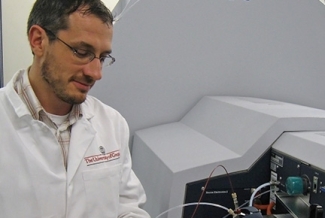Oil-degrading marine microorganisms in the Gulf of Mexico are the focus of a broad array of research at UGA, and a new study documents biodegradation in deep seawater using ultra-high resolution mass spectrometry:
The challenging task of quantifying the chemical composition of oil and weathered oil from the Deepwater Horizon spill has been the focus of past studies and continues with ongoing investigations. The researchers in this study applied similar analytical techniques to characterize the molecular formulae and compositional changes of oil and dispersant-derived compounds during biodegradation in laboratory incubations that used Macondo surrogate oil, Corexit 9500, and deep Gulf water samples.
Michael Seidel, the study’s lead author, explained how dispersants may have affected microbial oil degradation, “The addition of dispersant in our experiments led to an increase of sulfur-containing organic molecular formulae, which were probably derived from the surfactant di-octyl sulfosuccinate (DOSS), an important component of several chemical dispersants.” He continued, “We were able to assign structures to several of these molecules, and we propose that they are DOSS degradation products and other dispersant components.”
Patricia Medeiros, the study’s corresponding author, noted that the discovery of a specific molecular composition for water-soluble oil fractions is “an important step towards the identification of oil molecular fingerprints that can be useful to identify future oil spill sources.” Seidel explained a unique aspect of this study, “We were able to show preferential degradation, transformation, and enrichment of distinct organic compounds when DOSS is used to chemically disperse oil.” Medeiros said that it will be important to continue studying these compounds to track and understand the fate of dispersants in the marine environment.
Following up on the great feature on Dr. Joye, the details of this work demonstrate just how broad-based UGA marine science efforts are, the extensive reach of GoMRI support, and introduce more of the extraordinary faculty engaged in the efforts. The diligence, precision techniques and overwhelming human hours required for these analyses might be easy to overlook but it's important to appreciate the team effort and expertise that makes it all possible. Congratulations to Dr. Seidel and Dr. Medeiros. Keep up the good work.
Image: Dr. Michael Seidel injects a sample into an ultrahigh resolution mass spectrometer located in Oldenburg, Germany. The instrument identified the individual oil- and dispersant-derived compounds within the many dissolved organic molecules that are naturally present in Gulf of Mexico seawater.

